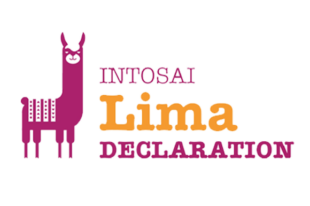Supreme Audit Institutions and Applying the Value Creation Concept for Taxpayers in a Digital Era

Author: Dr. Sutthi Suntharanurak, Director of International Affairs Office, State Audit Office of the Kingdom of Thailand.
In the digital era, the one of the main challenges of public sector auditing is responding to digital disruption. Hence, several Supreme Audit Institutions (SAIs) have attempted to move from a traditional to a modern approach, which is steered by digital technology.
The digital approach in public sector auditing can be looked through the lens of the 5ABCDI concept, which stands for 5G, AI, Blockchain, Cybersecurity, Data Analytics, and Internet of Things (IoT). SAIs could use these advanced technologies to improve their performance. However, incorporating these advance technologies requires reorganizing SAIs’ organizational structures and shifting the audit paradigm . SAIs considered an important question of how to create taxpayer value after the digital transformation.
Based on INTOSAI P-12, SAIs could make a difference in the lives of citizens by demonstrating ongoing relevance to taxpayers as key stakeholders. The digital revolution makes SAIs respond to the emerging challenges, following INTOSAI P-12 (principle 5). Applying value creation can help explain how SAIs could create their values for taxpayers.
A business model describes how an organization creates, delivers, and captures value. The value consists of three types: cost, experience, and platform. These values reflect disruptive business models. SAIs could apply the value creation for citizens as follows.
(1) The cost value: SAIs could reduce their costs by leveraging modern technologies. For example, SAIs have conducted remote audits and utilized telework during the pandemic. SAIs could blend on-site and remote audits after the pandemic to save on time and cost. Further, SAIs can use data analytics to optimize audit operations to lower costs. SAIs could also leverage cloud technology when collecting audit evidence. Digital technology could help SAIs complete more audit tasks for less cost.
(2) The experience value: SAIs could increase their value through digitalization, and by leveraging new ways to share citizens’ experiences in public spending.. For example, the taxpayers are satisfied when they know their taxes are transparently spent and the taxpayer is receiving value for money. Under INTOSAI P-12 principle 6, communicating effectively with stakeholders, SAIs could create a digital platform for sharing citizens’ experiences in public spending. For example, SAIs could open an online platform for taxpayers to monitor progressive public spending. SAIs could also utilize this digital space for citizens to give feedback when reading audit reports.
(3) The platform value: SAIs can leverage platform value to create accountability ecosystems, and can initiate a digital platform to create value for taxpayers interested in transparency and participation in the budgetary process to engage citizens.. Likewise, SAIs can utilize crowdsourcing, another platform value, to gather and publish information relevant to public spending transparency.

Figure 1: SAIs could create three values for taxpayers through digital transformation.
However, there are several key success factors to achieving the three values in digital transformation. These key success factors include; (a) adopting staff mindset to be proactive; (b) pushing cultural transformation to respond to digital disruption; (c) building auditors’ capacities by upskilling and reskilling for digital literacy; (d) revising cumbersome regulations, which might not fit the digital era; and (d) seeking strategic partnerships to develop SAIs in the future.
In conclusion, value creation can help SAIs create concrete values for citizens in a digital era, and can reflect the new role of SAIs in navigating new, emerging technologies and the challenges that may come with them.
About the Author: Dr. Sutthi Suntharanurak is the Director of International Affairs Office, State Audit Office of the Kingdom of Thailand. He has been the researcher of ASOSAI Research Project since 2015. This paper was inspired by Associate Professor Atipol Bhanich Supapol from York University, who gave knowledge about value creation. The author thanks for his idea and inspiration. Please contact the author: sutthisun@gmail.com





